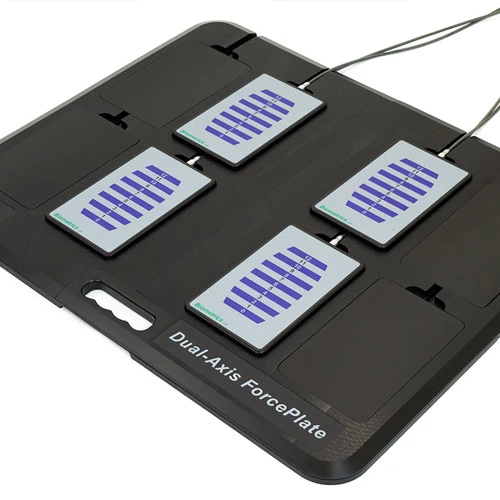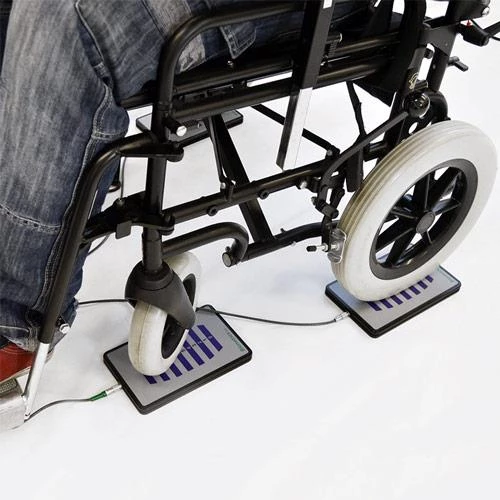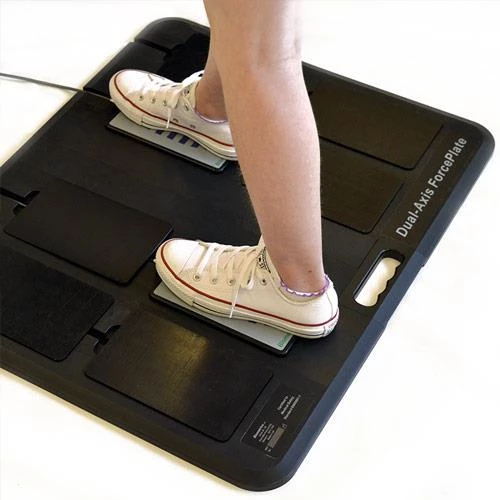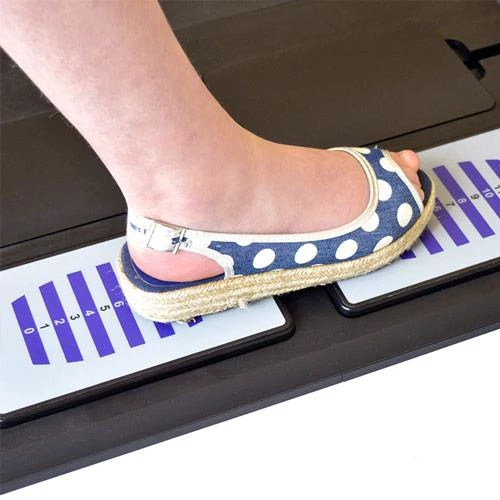Weight-Bearing Balance Evaluation
Balance may be defined as the result of several body systems interacting together - the visual system, the vestibular system and proprioception. Degeneration by disease or loss of function from injury can lead to balance problems and diagnosis and treatment presents a major challenge to the clinicians involved.
E-LINK ForcePlate systems offer a solution as they accurately and objectively assess the patient's ability to maintain postural stability on a static surface and evaluate progress over time as an outcome measure. Results help determine where treatment needs to be focused that is specific to the individual patient.
Many balance disorders require balance training and E-LINK ForcePlates are ideally placed as they provide the means for exercise immediately following assessment. Gradable, computer-based activities motivate the patient to exercise and address static and dynamic postural control, body alignment and weight distribution, thereby improving overall balance.
Four ForcePlates – DFP4 Dual Axis Weight-Bearing Evaluation and Exercise Kit
The E-LINK Dual Axis ForcePlate System scientifically quantifies the symmetrical weight distribution of the patient in both anterior-posterior (front/back) and medial-lateral (left/right) axes simultaneously. It therefore accurately and objectively assesses the patient's ability to maintain postural stability on a static surface and evaluates progress over time.
- Four ForcePlates are placed in a standardized Baseframe and positioned to accommodate difference stance widths for both paediatrics and adults
- Foot position is standardized on the ForcePlates (medial arch placed over the gap between front and back ForcePlate) and documented for each test, thus reducing variability for test to re-test reliability
- The standing balance assessment, undertaken for 5, 10, 15, 30 or 60 second test, measures fluctuations in the weight distributed over the ForcePlates
- The results are displayed both in text and graph format for immediate feedback and analysis, with the average % deviation from the center documenting the symmetry of the patient's stance and the standard deviation % documenting stability
- Up to 10 tests can be compared simultaneously for progress reporting over time and the report may serve as an outcome measure
- Balance training exercise can immediately follow evaluation and feedback from the assessment helps determine where exercise needs to be focused
- The ForcePlates may also be removed from the BaseFrame, be placed on a chair and used to assess seated balance
- They can even be placed under the legs of a chair/wheels of a wheelchair where adaptation is needed for assessment (each ForcePlate accepts 100kg weight)
Two ForcePlates – DFP2 Single Axis Weight-Bearing Evaluation and Exercise Kit
As an option, two ForcePlates may be used with the BaseFrame for evaluation of medial-lateral (left/right) balance or for unilateral anterior- posterior (front/ back).
Removed from the BaseFrame two ForcePlates can be used for seated balance assessment and exercise or for bilateral upper limb weight-bearing assessment and exercise.
The distinctive portability and modularity of E-LINK ForcePlates enable them to be used in many clinical areas:
- Stroke rehabilitation
- Neuro rehabilitation
- Spinal Cord Injury patients
- Post- surgical hip, knee and ankle patients
- Amputee services
- CRPS patients
- Patients at Risk of Falls
Mini Case Study #1 - Using the DualAxis ForcePlates
Mini Case Study #1 - Using the DualAxis ForcePlates
From the Therapist - “So far I’m finding the Dual Axis ForcePlate invaluable for the CRPS patients and LL functional movement disorders. At the moment it’s the mainstay of my treatment with a 14 year old young lady currently on caseload. So far just using the visual feedback to help her re-learn even weight distribution with correct body alignment and doing the timed tests. Not got to games stage with her yet but hopefully can progress to that soon”.
Paediatric Unit, UK
Mini Case Study #2 - Using the DualAxis ForcePlates
Mini Case Study #2 - Using the DualAxis ForcePlates
From the Therapist - “Thanks for this…Already managed to improve on her results from yesterday – sustained midline throughout on the 10sec test, could take up to 86% of her body weight through the right leg on the peak right left test and on activities following, and got max of -37 knee flexion”
From the patient – “I am writing to you to tell you how thank you I am for Biometrics E-Link Dual Axis Force Plates as I was admitted in hospital for two week because I was diagnosed with CRPS (Complex Regional Pain Syndrome also called Reflex Sympathetic Dystrophy) so I was admitted to do CRPS Treatment block . The Biometrics help me a lot in my occupational therapy sessions to put weight back on my leg as I wasn't able too before. I had been in crutches for 6 months and in two week was able to get back to walk again so I am so great full for Biometrics E-link Dual Axis force plates kit.”
Paediatric Unit, UK






